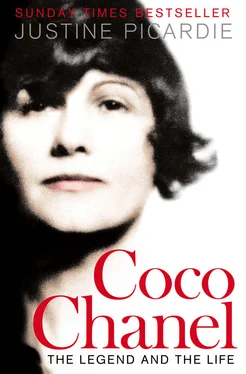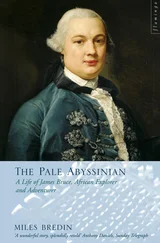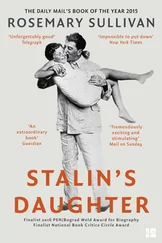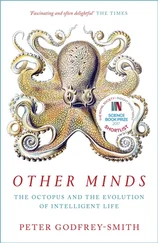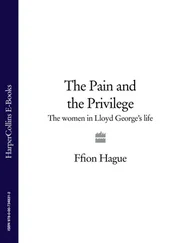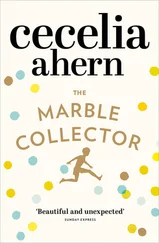© Apis/Sygma/Corbis
Sleek. Chic. Notoriously guarded. Welcome to the secret world of Gabrielle Chanel.
The story of Chanel begins with an abandoned child, as lost as a girl in a dark fairytale. Unveiling remarkable new details about Gabrielle Chanel’s early years in a convent orphanage, and her flight into unconventional adulthood, Justine Picardie explores what lies beneath the glossy surface of a mythic fashion icon.
Throwing new light on her passionate and turbulent relationships, this beautifully constructed portrait gives a fresh and penetrating look at how Coco Chanel made herself into her own most powerful creation. An authoritative account, based on personal observations and interviews with Chanel’s last surviving friends, employees and relatives, it also unravels her coded language and symbols, and traces the influence of her formative years on her legendary style.
Feared and revered by the rest of the fashion industry, Coco Chanel died in 1971, at the age of 87, but her legacy lives on. Drawing upon her unprecedented research, Justine Picardie brings Gabrielle Chanel out of hiding and uncovers the consequences of what she covered up, unpicking the seams between truth and myth, in a story that reveals the true heart of fashion.
‘Justine Picardie’s thoughtful and beautifully illustrated biography illuminates the iconoclast who might justifiably be said to have invented the twentieth-century woman’
Times Literary Supplement

Copyright Copyright Foreword: Chanel and I Mademoiselle Is at Home Gabrielle In the Shadow of the Cross Coco Courtesans and Camellias The Double C The Little Black Dress Misia and the Muse Number Five The Russians The Duke of Westminster Riviera Chic The Woman in White The Promised Land Diamonds as Big as the Ritz Through a Glass, Darkly The Comeback Celebrity Chanel Scissors La Grande Mademoiselle Picture Section Bibliography List of Searchable Terms Acknowledgements About the Author About the Publisher

HarperCollins Publishers 1 London Bridge Street London SE1 9GF
www.harpercollins.co.uk
First published by HarperCollins Publishers 2010 This revised edition published by HarperCollins Publishers 2017
© Justine Picardie 2010, 2017
Cover layout design © HarperCollins Publishers 2010 Cover photograph © Apis/Sygma/Corbis
A catalogue record of this book is available from the British Library
Justine Picardie asserts the moral right to be identified as the author of this work
While every effort has been made to trace owners of copyright material reproduced herein and secure permissions, the publishers would like to apologise for any omissions and will be pleased to incorporate missing acknowledgements in any future edition of this book.
All rights reserved under International and Pan-American Copyright Conventions. By payment of the required fees, you have been granted the nonexclusive, non-transferable right to access and read the text of this e-book on screen. No part of this text may be reproduced, transmitted, downloaded, decompiled, reverse engineered, or stored in or introduced into any information storage retrieval system, in any form or by any means, whether electronic or mechanical, now known or hereinafter invented, without the express written permission of HarperCollins e-books.
Find out about HarperCollins and the environment at www.harpercollins.co.uk/green
Source ISBN 9780007318995
Ebook Edition © JUNE 2017 ISBN: 9780007346295
Version 2017-04-24
‘I imposed black;it’s still goingstrong today,for black wipes outeverything else around.’
Coco Chanel
Contents
Cover © Apis/Sygma/Corbis
Title Page
Copyright
Foreword: Chanel and I
Mademoiselle Is at Home
Gabrielle
In the Shadow of the Cross
Coco
Courtesans and Camellias
The Double C
The Little Black Dress
Misia and the Muse
Number Five
The Russians
The Duke of Westminster
Riviera Chic
The Woman in White
The Promised Land
Diamonds as Big as the Ritz
Through a Glass, Darkly
The Comeback
Celebrity Chanel
Scissors
La Grande Mademoiselle
Picture Section
Bibliography
List of Searchable Terms
Acknowledgements
About the Author
About the Publisher
Foreword: Chanel and I
I am writing this at the desk of Gabrielle Chanel, in her private apartment above the couture salon of the business she founded in 1910, in Rue Cambon. This is a place I first came to many years ago, not long after the death of my sister Ruth in 1997. The story that follows is not about my sister, but she is part of it, as is my mother, who married my father wearing a little black dress, cut from a Chanel pattern, eight months before I was born. That dress took on a talismanic quality when I was old enough to wear it as a young woman; it seemed to speak of elegance, but also of rebellion (for to marry in black is to break a powerful taboo). And Chanel appeared to be significant in other ways, too – for like legions before me, I came to associate her name with the scent of womanhood; in my case, via the flask of Chanel N°5 in my mother’s bedroom, and the vial of Chanel N°19 that her mother, my grandmother, gave me as a birthday present when I turned 18. Thus Chanel was written into our lives, but with a light touch (a spray of perfume; the feel of black satin against naked skin).
And then my beloved sister died of breast cancer at the age of 33, when her longed-for twins had just reached their second birthdays. In the aftermath, I felt as if my heart was cracked and might never mend again; for Ruth was my best friend, my comrade since childhood, the girl I had always sought to protect, a lifelong companion whose journey I had shared for so long.
As a consequence, perhaps, I discovered that grief has a strange communality (and also that mourning takes on many more forms than merely wearing black). This may also explain why I felt an unexpected rush of sympathy for Chanel herself, on that initial visit to her apartment; for it seemed to be the inner sanctum of a woman whose life had been marked by a series of savage losses. First came her mother’s death, when Gabrielle was 11 years old; swiftly followed by the disappearance of her father, who abandoned his five children; and then the demise of her two sisters (one committed suicide, having been rejected by the man she loved; the other drank herself to death after a failed marriage). All this I heard from my expert guide to the apartment – one of the remarkable women who work in Chanel’s archives – and later that day from Karl Lagerfeld, Chanel’s creative director since 1983, and a man who knows and understands every last detail of the life and work of the brand’s founder.
But if the shadow of bereavement is perceptible in the place where I am writing today, so too is a sense of the life that Chanel created for herself. Just in front of me, looking directly into my eyes, is one of her favourite mementoes – a small painting of a lion – and there are a number of others elsewhere in the apartment. These act as a reminder that she was born under the sign of Leo, but also of her own fierce spirit in establishing her independence, at a time when women in France were still denied the vote.
Читать дальше
